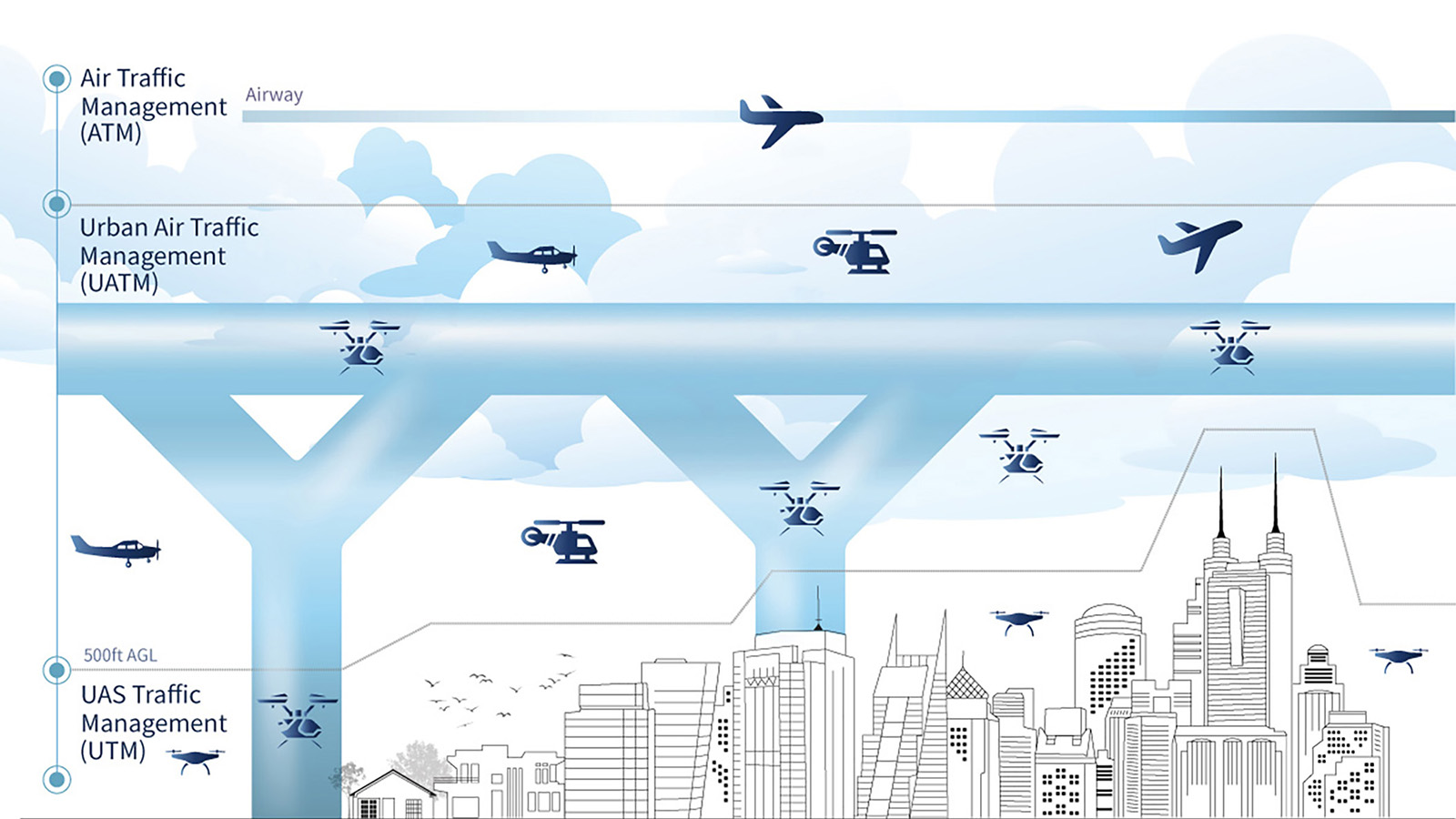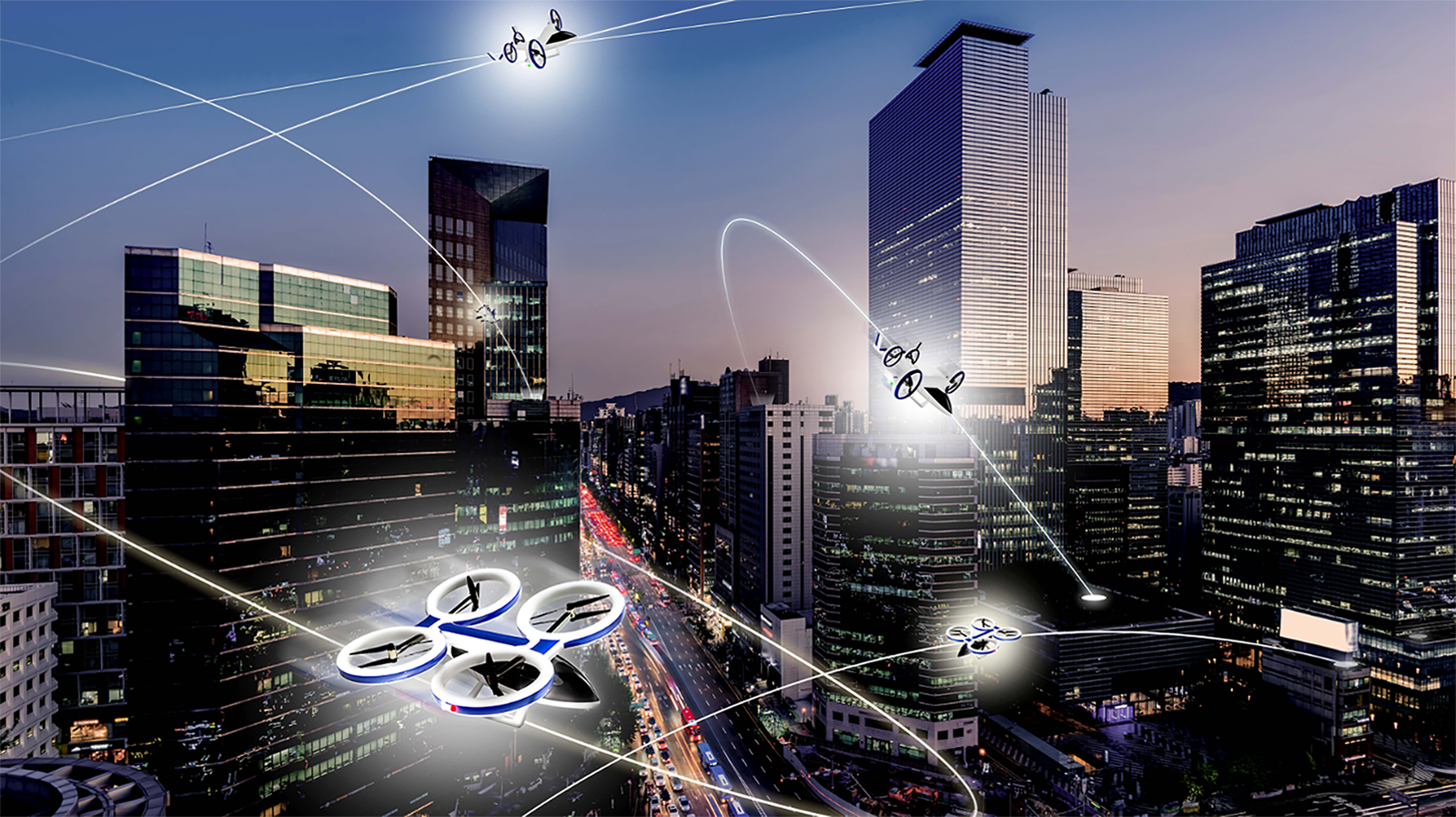Stay Up to Date
Submit your email address to receive the latest industry and Aerospace America news.
Korean Air is part of an effort to develop air taxi infrastructure to ease traffic in congested Seoul starting in 2025. Aaron Karp spoke to executives about the work ahead.
Sitting in a car in slow-moving bumper-to-bumper traffic, watching large video boards on the sides of buildings intended to help alleviate the boredom of frustrated automobile drivers and passengers was an inevitable part of my several trips to Seoul. The bustling city of 10 million residents is forever plagued by stalled road traffic. Getting between Gimpo International Airport, the domestic hub located in Seoul, and Incheon International Airport, the international hub located 50 kilometers from the city, is often quite trying.
Seoul does have a robust subway train system, but the city’s density and high population mean roadway traffic is still intense — a prime candidate for whisking passengers above the congested roadways in small electric aircraft providing urban air mobility services, a subset of advanced air mobility.
That’s the eventual goal of the South Korean government, but no concrete decisions have been made about whether such a service would consist of government-owned public transit, like a subway in the air, or a collection of private companies operating their own fleets of air taxis to provide scheduled or on-demand flights.
Whichever ends up being the choice, the Ministry of Land, Infrastructure and Transport is working with the private sector to develop the necessary support infrastructure including vertiports, software and equipment for traffic management and rules that would enable air taxi flights.
Korean Air in April joined the effort and will provide everything from a flight operation simulator and flight control system for managing schedules, to a computerized traffic management system that would deconflict flights and a digital replica of the UAM airspace. The work will begin in Seoul to assess safety.
“The airline believes UAM will revolutionize the future of air transport,” Soo-Keun Lee, Korean Air’s chief safety and operating officer, told me in an email exchange. “The airline seeks to build a strong foundation in the UAM field through extensive research and development, and secure its position as a pioneer in the industry.”
Lee noted that Korean Air performs maintenance on South Korean military helicopters, so it is not unfamiliar with rotorcraft. The airline has also developed and built its own drones, so autonomous flight is not foreign to the company. (Even though initial air taxi flights will be piloted, air taxi developers say the future of the technology is autonomous or remotely piloted flight.)
Other participants in the South Korean UAM project include Hyundai Motor Co., whose Supernal subsidiary is developing an electric vertical and landing vehicle, eVTOL, air taxi design as well as an electric short takeoff and landing, eSTOL, aircraft.
Korean Air has not decided whether it will operate air taxis itself, but it does see ties between its mainline airline operations and possible eVTOL flights in Seoul.
“Travel to and from the airports is hampered by traffic jams,” Lee explained. What Seoul needs, he said, are flight management systems, prescribed routes, supporting infrastructure and air traffic rules so the city is ready to handle electric air taxi operations as soon as 2025.
“With the limitations of the existing ground transportation, we expect UAM to provide an ideal solution for those wishing to move faster through the city,” Lee said. “We expect for UAM routes to begin by connecting passengers from Incheon Airport and Gimpo Airport into Seoul, and later expand to cover areas close to Seoul as the vehicle’s performance improves.”
The digital twin of the air taxi environment in Seoul will be a high priority.
“UAM flight operations require the establishment and approval of flight plans for each route. While the safety of each route needs to be verified, it is difficult to accomplish this with flight tests alone,” Lee said. “The digital twin is expected to play a vital role in verifying the safety of each route through the use of big data and AI.”
Korean Air is focused on developing a series of fixed routes in which air taxis would operate — in essence, a series of airline routes on a much smaller scale. The airline believes this is crucial to safely deconflicting flights in the crowded city.
Indeed, Korean Air is bringing an airline mindset to the air taxi concept. It plans to develop an airline-style flight control system that will include flight schedule management and flight planning. The system will provide air taxi operators with information on weather, approved routes, airspace conditions and the location of vertiports.
According to Lee, “UAM still significantly lacks the necessary infrastructure, safety regulations and social acceptance” to begin operations, necessitating a great deal of work over the next two to three years if Seoul is going to have air taxis flying over traffic by the middle of this decade.
“As an airline and aviation company, I believe Korean Air understands the UAM industry the best in Korea,” Lee added.
But the implications of the work could extend beyond South Korea.
“Korean Air will actively participate in creating international standards for UAM transportation using its expertise, experience and technology,” Lee said.
For now, residents of and visitors to Seoul will continue to contend with extreme road congestion. But the South Korean government and Korean Air are trying to create a better transportation future.
About Aaron Karp
Aaron is a contributing editor to the Aviation Week Network and has covered the aviation business for 20 years. He was previously managing editor of Air Cargo World and editor-in-chief of Aviation Daily.
Related Posts
Stay Up to Date
Submit your email address to receive the latest industry and Aerospace America news.






